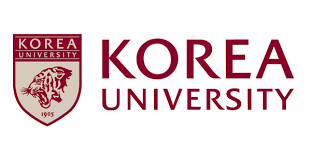Korea University: Development of Technology for Synthesizing Energy Conversion Material Within Seconds
Professor Choi Won-joon’s group from the School of Mechanical Engineering in the College of Engineering developed technology for synthesizing energy conversion materials within seconds. The technology, based on an electrothermal wave (ETW) process, synthesizes Ni-Co oxide@C (nickel-cobalt oxides on a carbon substrate) composites using a defective carbon structure. When electric energy is applied to a carbon substrate, thermal energy is generated due to the internal resistance of the carbon substrate, resulting in damage to or defect in the carbon structure. The induced defects cause a change in heterogeneous nucleation variation in the precursor. Therefore, the structural features and chemical composition of the synthesized Ni-Co oxide@C composites can be artificially controlled according to the degree of the carbon defect to secure optimized performance for each targeted application.
The results of the study were published online in ACS Nano (IF=15.881, top 6.14%), a renowned journal in materials science and chemistry, on May 26.
The ETW process employed in this study is a technology for supplying thermal energy to a system by applying electric energy at both ends of a conductive substrate to induce Joule heating. This technology increases systemic temperature to up to 2,500°C within seconds. The ETW process is often applied to metallic and metal oxide synthesis and modification of an interface with a current collector, as thermal synthesis is required. The materials synthesized by the ETW process are applied as active materials for energy conversion devices after optimization of the electrochemical characteristics. Conventional thermal synthesis is inefficient in terms of time and cost because high-temperature environment should be maintained for a long time. On the contrary, the ETW process requires a very short time, and so is applied effectively in various areas.
Professor Choi’s group applied the ETW process in two stages for the synthesis of composites consisting of Ni-Co and Ni-Co oxide on a carbon substrate, as the substances are widely used as energy conversion materials. In the first ETW process, carbon substrate defects were induced, and then a Ni-Co precursor was deposited. Then, the second ETW process was performed to synthesize Ni-Co and Ni-Co oxide using thermal energy. In the first ETW process, the process duration was varied within 8 seconds to control the degree of carbon substrate defects. In the second ETW process, process conditions were kept constant to analyze the impact of carbon defects on the ultimately obtained composites (0.5 second for the second ETW process). The structural features and the chemical composition of the synthesized composites were optimized under specific conditions of the first ETW process, and the optimization results were analyzed by scanning electron microscopy, energy dispersive spectrometry, X-ray photoelectron spectroscopy and Raman spectroscopy.
The mechanism that Professor Choi’s group suggested is that the defects of the micro-nanostructures of the carbon substrate, induced by the first ETW process, determines the affinity between the precursor solution and the carbon substrate. Deposition of the precursor solution on the carbon substrate changes the contact angle on the interface. According to the nucleation energy theory, the change of the contact angle changes the heterogeneous nucleation energy level of the system that consists of the precursor and the carbon substrate, consequently affecting the nucleation rate and crystal growth. Therefore, the particle size distribution of the precursor and other characteristics can be controlled according to the degree of the carbon defects, varying the characteristics of the composites that are synthesized in the second ETW process. The characteristics of the synthesized composites were analyzed and verified with regard to the structure and chemical composition.
The research group explained that the technology can be used to synthesize composites consisting of Ni-Co, Ni-Co oxide and a carbon substrate to obtain the desired characteristics, securing the characteristics optimized to each targeted application. The composites consisting of Ni-Co, Ni-Co oxide and a carbon substrate, synthesized and optimized in the study, were applied as supercapacitor active materials, and the performance was better in comparison with previous studies. The results showed that the composites synthesized in the present study can be employed in electrochemical energy conversion applications.
The research group described the significance of the results, “Based our technology, a simple pretreatment process can be applied to a carbon substrate within seconds to control the characteristics of metal-metal oxide composites. This allows us to not only screen material characteristics in advance according to process conditions but also overcome limitations of the conventional thermal processes. We are looking forward to seeing wide application of the process in the fields of electrochemical energy storage and power generation.”

